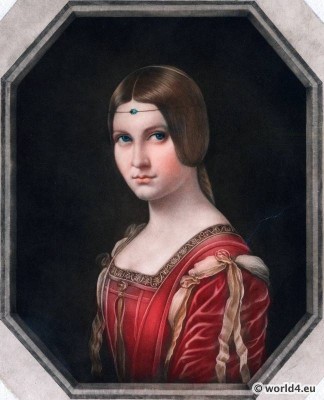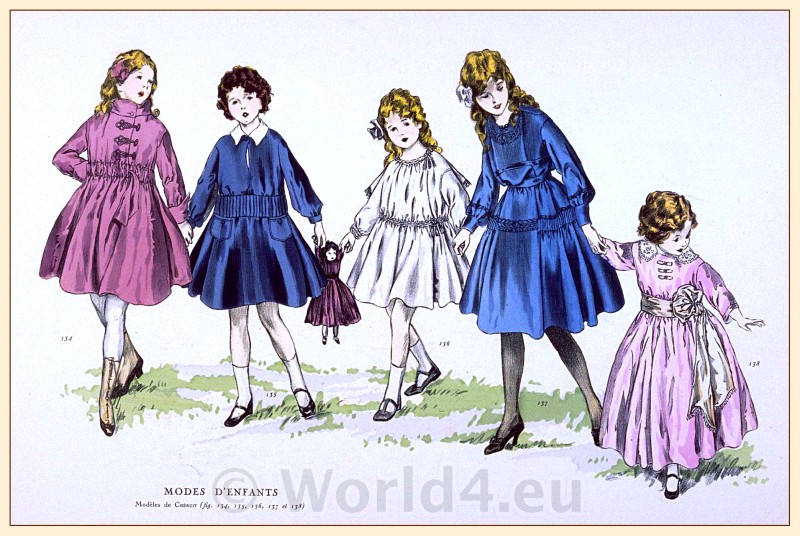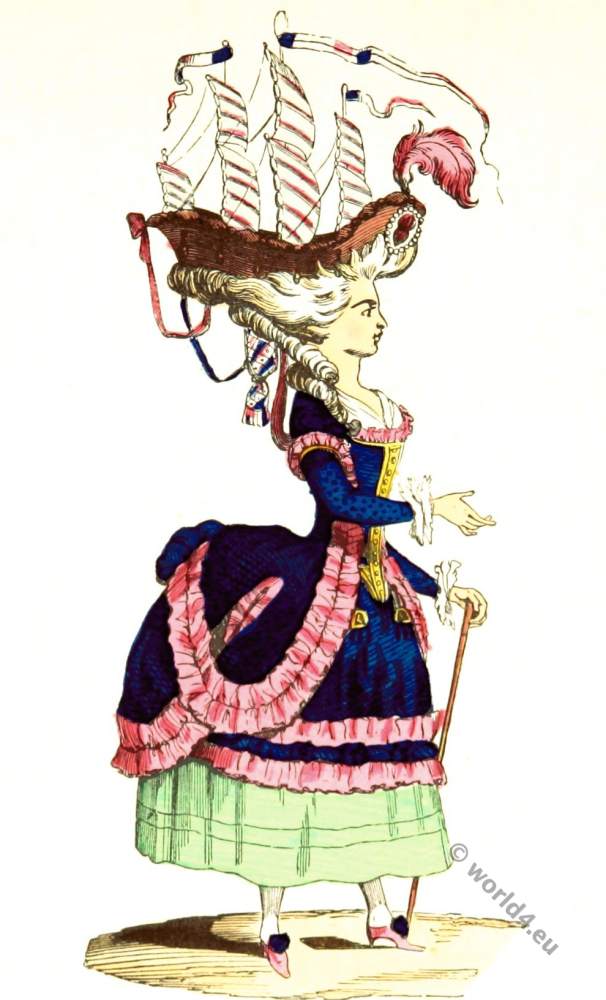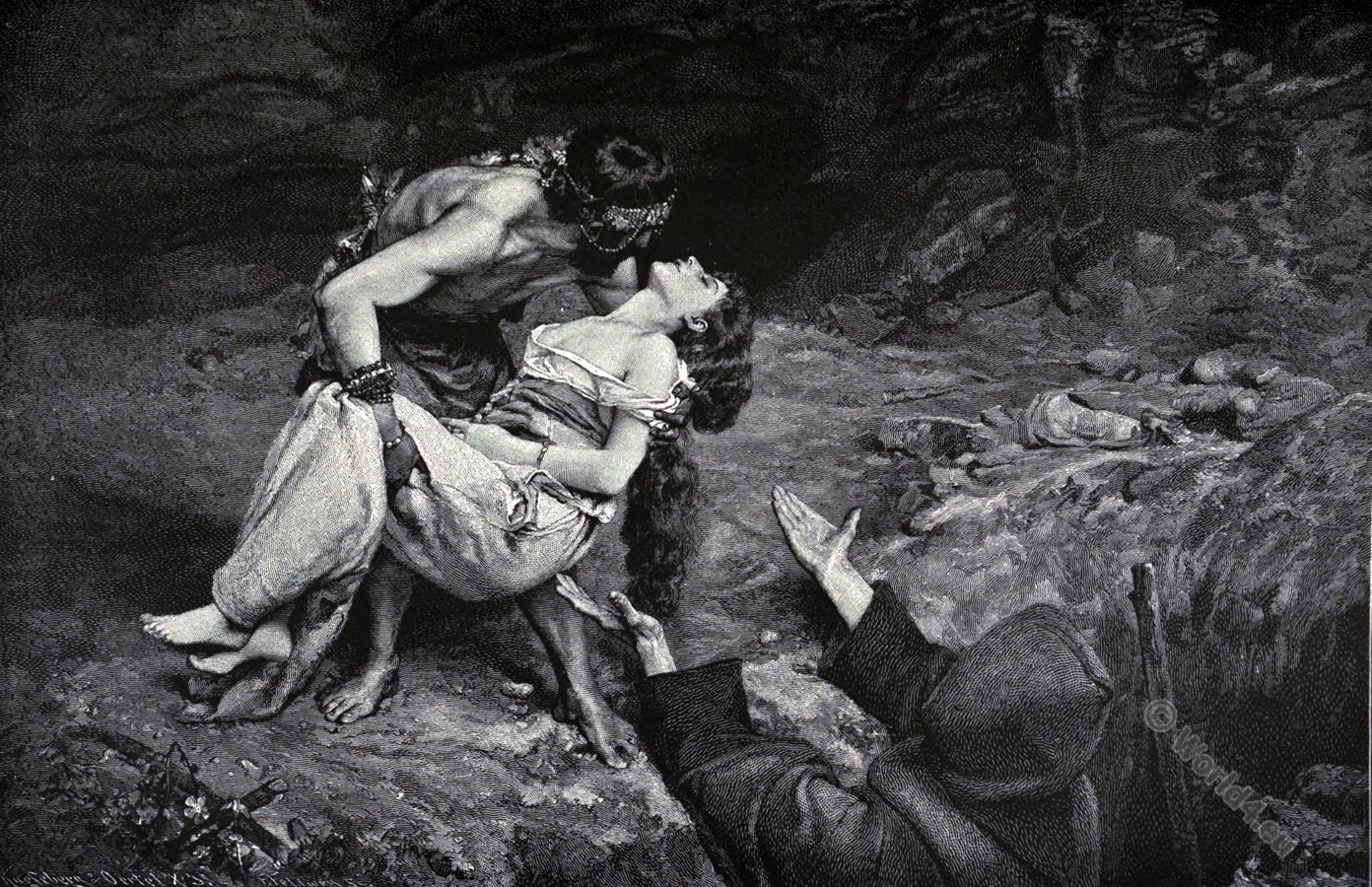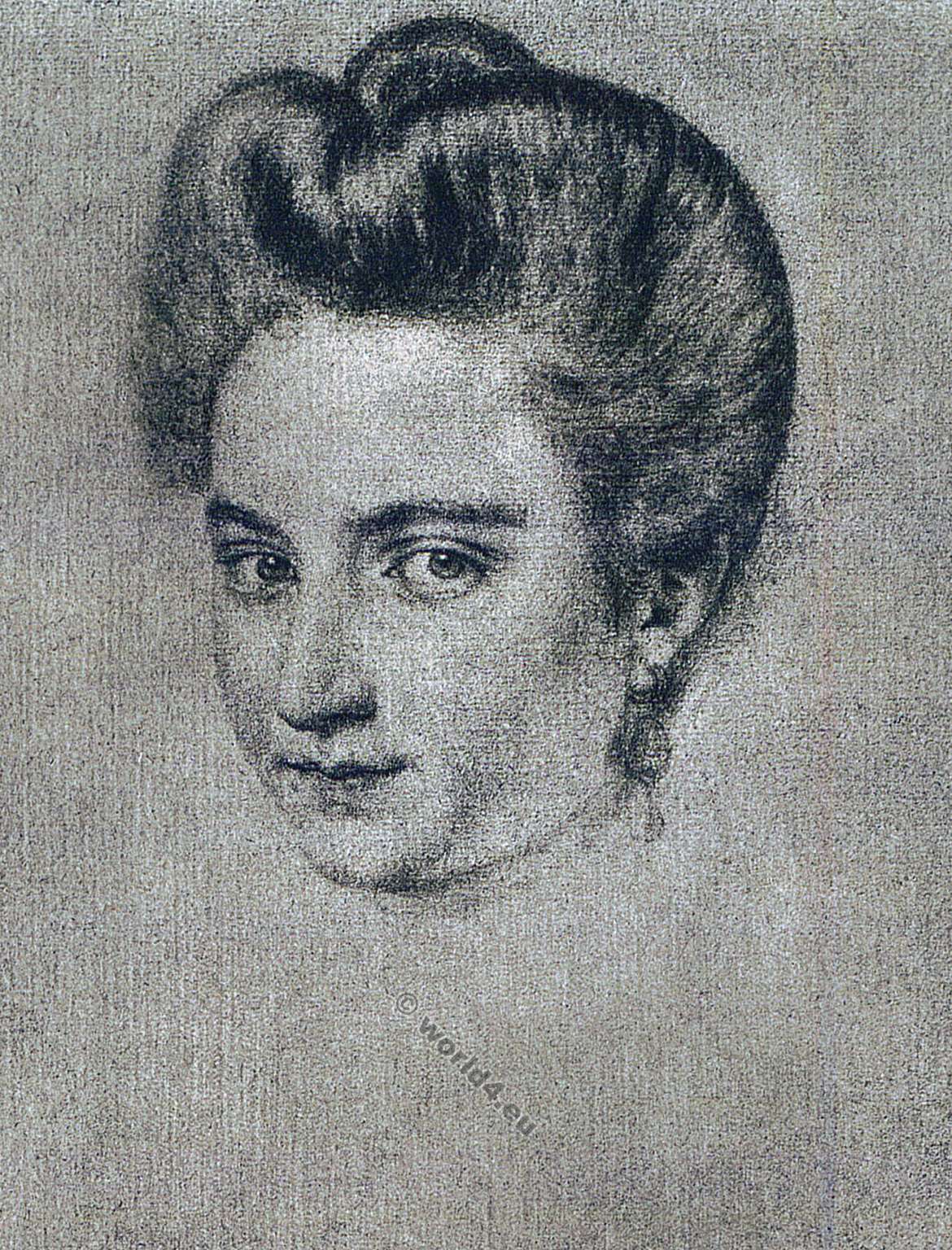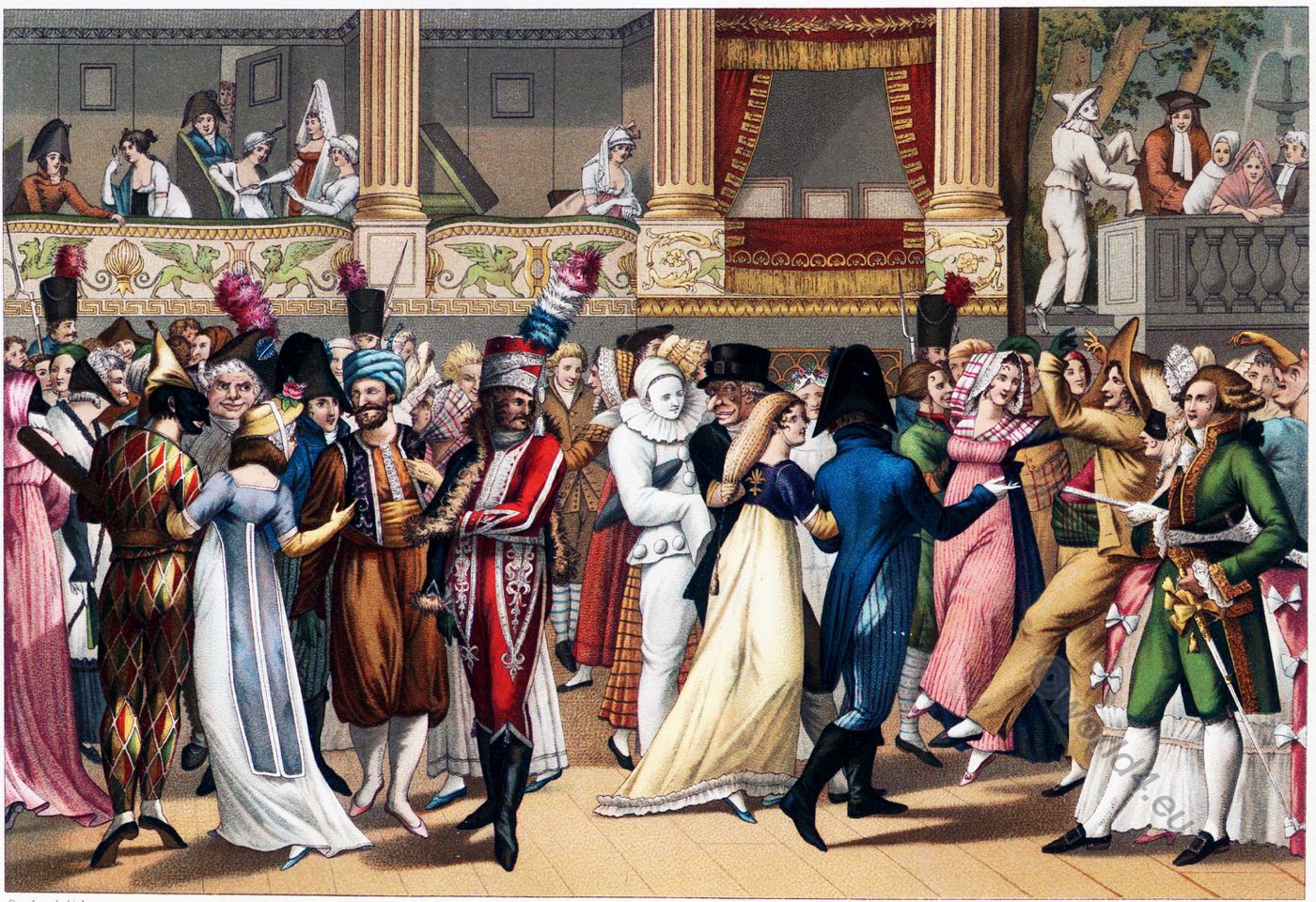La belle ferronnière 1495 to 1499. Mistress of the French François I.
To this painting there are diverse opinions. The painting was first mentioned in 1642 in a catalog of the royal collection of the palace of Fontainebleau, as a work of Leonardo da Vinci, which represents “a Duchess of Mantua”.
See: Château d’Amboise. The character of a royal fortress.
In the notes and manuscripts of Leonardo da Vinci, there are no indications of the emergence of the unsigned and undated image, as is the case with many of his pictures, and what also to the usual controversy over the authenticity of professionals and participation of workshop and students has led. Its present title received the painting apparently as a result of confusion.
The same catalog also mentions a portrait of “La Belle Ferronière”, a name not exactly known mistress of the French King Francis I. It is possible that the mistress of the wife or daughter of an ironmonger (French ferronnier) or was the wife of a lawyer called Féron or Le Ferron.
The confusion was apparently supported by the headdress of the represented person: The model is wearing a studded with a jewel, narrow headband. Jewels of this kind were called in the 16th century after those beloved of the king, as “Ferronière”.

